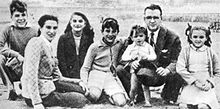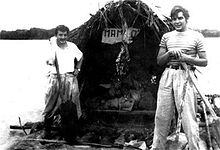A major figure of the Revolution
Ernesto “Che” Guevara
Ernesto “Che” Guevara (June 14, 1928 – October 9, 1967) was indeed a multifaceted figure with a diverse range of roles and talents. He remains well-known for his contributions as a Marxist revolutionary, physician, author, guerrilla leader, diplomat, and military theorist.
Ernesto “Che” Guevara journey towards becoming a revolutionary leader began during his youth when he traveled throughout South America. The journey of Ernesto “Che” Guevara from witnessing the socioeconomic issues in Latin America to becoming a key figure in the Cuban Revolution is a remarkable and historically significant transformation. Here’s a summary of his path:
- Early Radicalization: Guevara’s experiences traveling through South America exposed him to widespread poverty, hunger, and disease, which deeply affected him. These observations fueled his growing dissatisfaction with what he perceived as capitalist exploitation in Latin America, particularly by the United States.
- Involvement in Guatemalan Reforms: Guevara became actively involved in social and political reforms in Guatemala under the leadership of President Jacobo Árbenz. President Árbenz’s government was enacting progressive reforms, including land redistribution and social programs. Guevara’s participation in these reforms solidified his commitment to leftist and revolutionary ideologies.
- CIA-Backed Overthrow in Guatemala: Guevara’s political development took a significant turn when Árbenz’s government was overthrown with the support of the CIA. This event further convinced Guevara of the influence and interference of powerful corporate and political interests, like the United Fruit Company and the U.S. government, in Latin American affairs.
- Meeting the Castros in Mexico: In Mexico City, Guevara crossed paths with Fidel and Raúl Castro. He joined their revolutionary movement, known as the 26th of July Movement, which aimed to overthrow the U.S.-backed dictator Fulgencio Batista in Cuba.
- Cuban Revolution: Guevara quickly rose through the ranks of the 26th of July Movement and became one of its key leaders. He was instrumental in planning and executing the two-year guerrilla campaign that ultimately led to the overthrow of the Batista regime in Cuba in 1959. This marked the beginning of Guevara’s prominent role in the Cuban Revolution.
Ernesto “Che” Guevara’s journey from a medical student to a revolutionary leader and his commitment to addressing social injustices in Latin America are central aspects of his historical legacy. His role in the Cuban Revolution and his subsequent involvement in global revolutionary movements have left a lasting impact on the history of 20th-century political and social change.
Early life of Ernesto ”Che” Guevara

Ernesto “Che” Guevara was indeed born on June 14, 1928, in Rosario, Argentina. His family background was a mix of Spanish (specifically Basque and Cantabrian) and Irish ancestry, and his full name was Ernesto Guevara. However, his name is sometimes cited with “de la Serna” and/or “Lynch” accompanying it due to his family history.Two of Guevara’s noteworthy ancestors from the 18th century were Luis María Peralta, a prominent Spanish landowner in colonial California, and Patrick Lynch, an Irish immigrant to the Río de la Plata Governorate.It’s interesting to note that Che Guevara had a particular fondness for Ireland. He was known to talk about Ireland and its history, including guerrilla warfare, with a special interest. According to Irish actress Maureen O’Hara, Che would discuss Ireland extensively, and he claimed to have learned about Ireland’s history from his grandmother. This connection to Ireland is a unique aspect of Che Guevara’s background and interests.
Intellectual and literary interests
Ernesto ”Che” Guevara
Guevara learned chess from his father and began participating in local tournaments by the age of 12. During adolescence and throughout his life he was passionate about poetry, especially that of Pablo Neruda, John Keats, Antonio Machado, Federico García Lorca, Gabriela Mistral, César Vallejo, and Walt Whitman. He could also recite Rudyard Kipling’s If— and José Hernández’s Martín Fierro by heart. The Guevara home contained more than 3,000 books, which allowed Guevara to be an enthusiastic and eclectic reader, with interests including Karl Marx, William Faulkner, André Gide, Emilio Salgari, and Jules Verne.
Motorcycle journey
by
Ernesto ”Che” Guevara

Guevara (right) with Alberto Granado (left) in June 1952 on the Amazon River aboard their “Mambo-Tango” wooden raft, which was a gift from the lepers whom they had treated
In 1948, Che Guevara enrolled at the University of Buenos Aires to pursue a degree in medicine. However, his strong desire to explore the world and his interest in understanding the economic conditions in Latin America led him to take two significant journeys that had a profound impact on his life and his views.
The first journey, in 1950, involved a 4,500-kilometer (2,800 mi) solo expedition through the rural provinces of northern Argentina. He accomplished this journey on a bicycle fitted with a small engine. This experience allowed him to connect with the people and landscapes of his home country.
Following his bicycle journey, Guevara spent six months working as a nurse on Argentina’s merchant marine freighters and oil tankers, gaining practical experience in healthcare.
His second major expedition took place in 1951 when he embarked on a nine-month, 8,000-kilometer (5,000 mi) motorcycle journey across parts of South America. He was accompanied by his friend, Alberto Granado, and their ultimate goal was to volunteer for a few weeks at the San Pablo leper colony in Peru, located on the banks of the Amazon River. This journey provided Guevara with valuable insights into the socio-economic conditions and inequalities in various South American countries.
Guevara’s notes from his travels formed the basis of his book titled “The Motorcycle Diaries,” which remained unpublished until 1995. This book became a New York Times bestseller and was later adapted into a 2004 film of the same name. The “Motorcycle Diaries” offer a glimpse into the formative experiences and ideals that would later shape Che Guevara’s revolutionary views and his commitment to social justice.
Activism in Guatemala( Ernesto ” Che” Guevara
Cuban Revolution (Ernesto ”Che” Guevara)

The first step in Castro’s revolutionary plan was an assault on Cuba from Mexico via the Granma, an old, leaky cabin cruiser. They set out for Cuba on 25 November 1956. Attacked by Batista’s military soon after landing, many of the 82 men were either killed in the attack or executed upon capture; only 22 found each other afterwards. During this initial bloody confrontation Guevara laid down his medical supplies and picked up a box of ammunition dropped by a fleeing comrade, proving to be a symbolic moment in Che’s life.
Role as commander
Ernesto “Che” Guevara
As second-in-command, Guevara was a harsh disciplinarian who sometimes shot defectors. Deserters were punished as traitors, and Guevara was known to send squads to track those seeking to abandon their duties.[91] As a result, Guevara became feared for his brutality and ruthlessness.[92] During the guerrilla campaign, Guevara was also responsible for the summary executions of a number of men accused of being informers, deserters, or spies.[93] In his diaries. see more others leader
